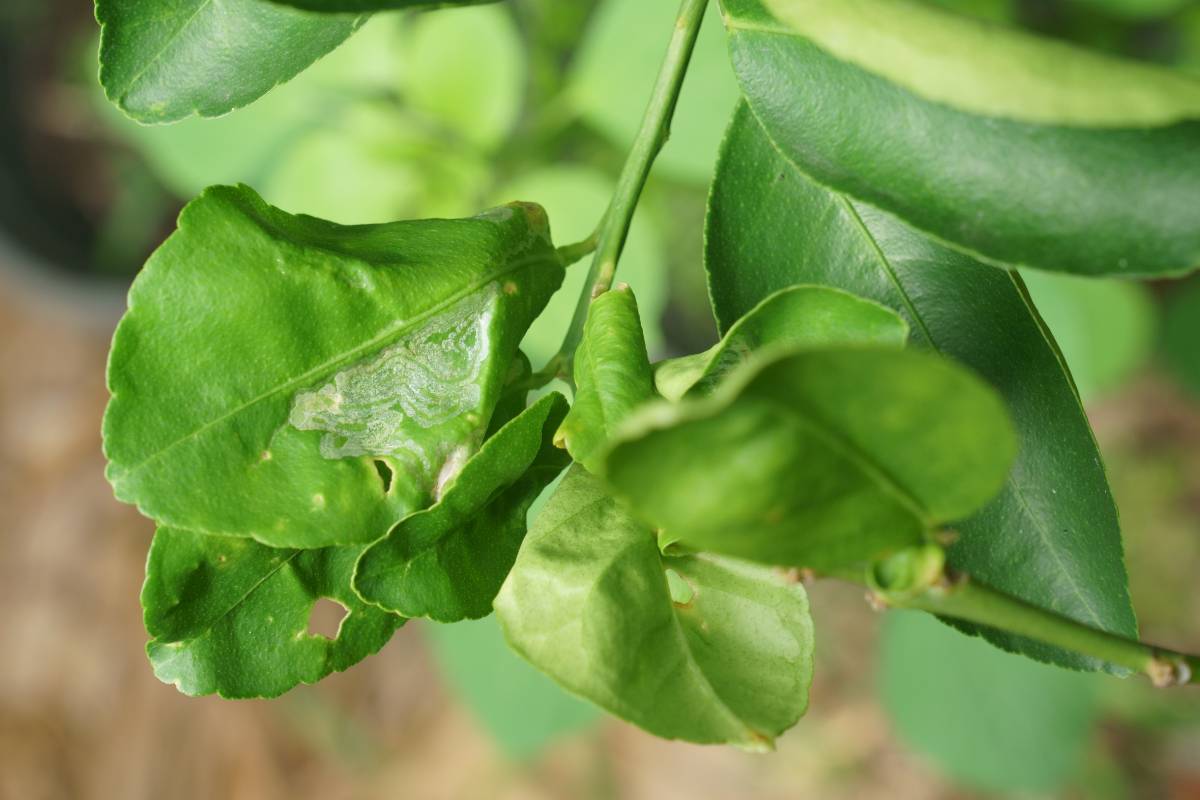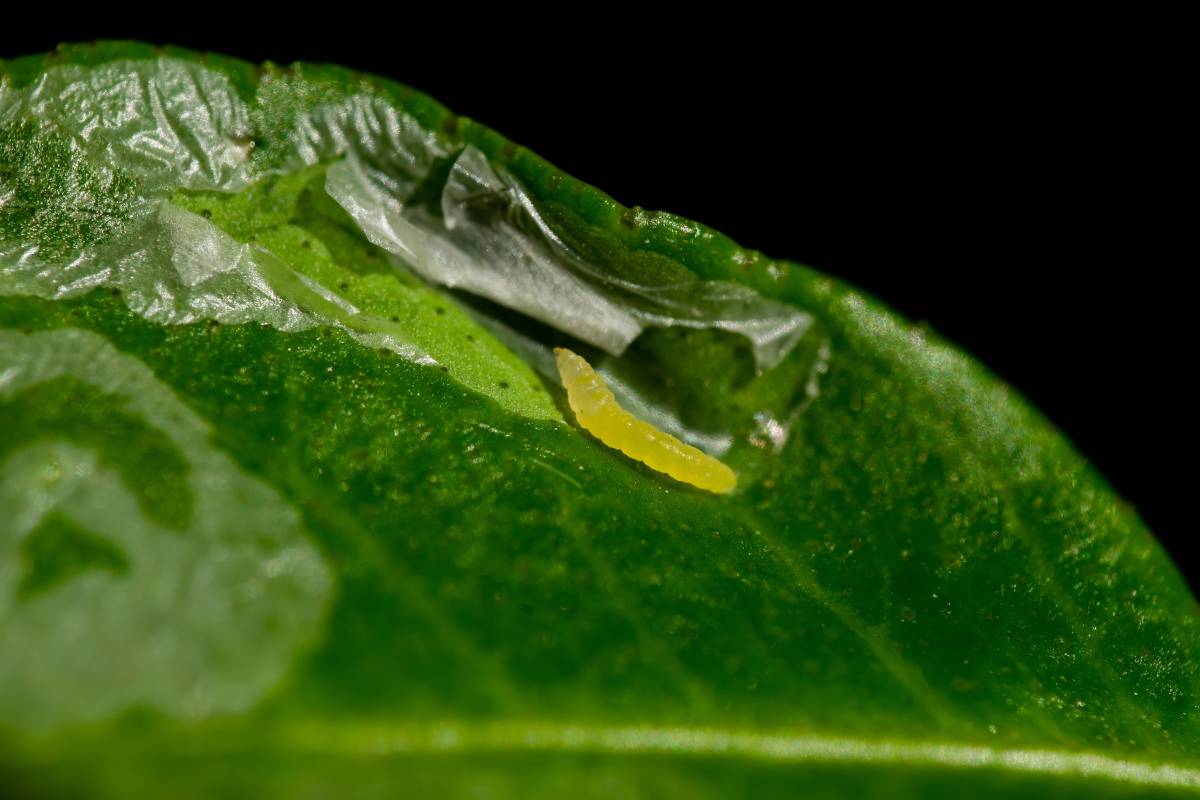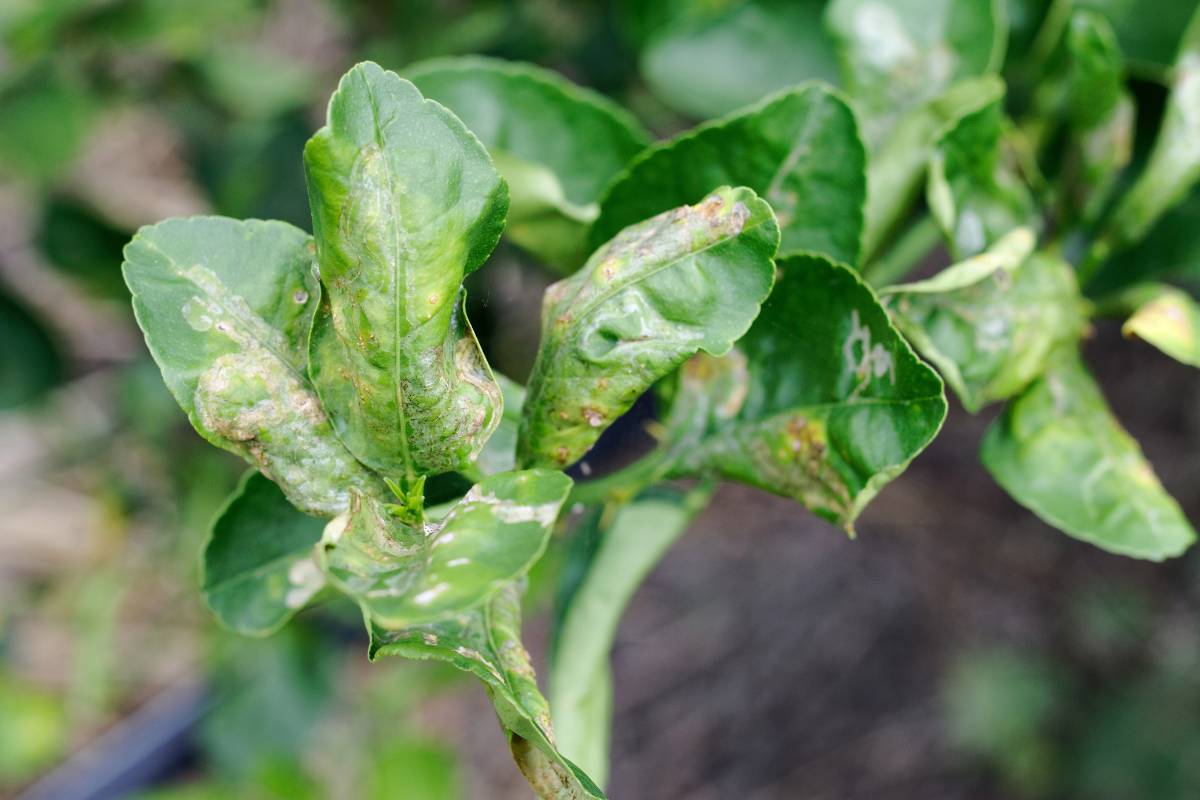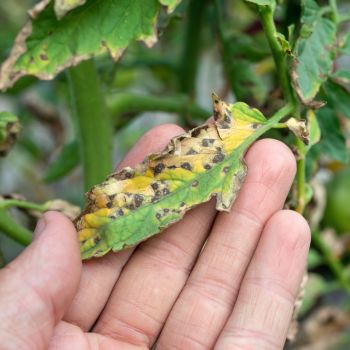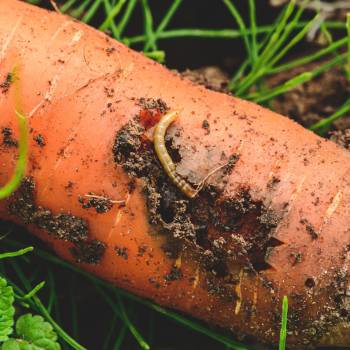Given the right conditions, a citrus tree can reward a gardener with a productive crop while enhancing the garden with its lush appearance. While most citrus varieties are relatively sturdy and can fend off many kinds of insect attention, they're particularly susceptible to one particular species.
Citrus leaf miner, or Phyllocnistis citrella, is a common pest that attacks all varieties of citrus. While an infestation is rarely fatal for an established tree, it can cause unsightly damage, reduce yields, and potentially weaken plants, leaving them more vulnerable to disease or other insect pests.
What Is Citrus Leaf Miner?
Citrus leaf miner is a native of southeastern Asia and was introduced to Australia sometime in the early 1900s, quickly becoming prevalent thanks to its fast breeding, with up to 15 generations a year. In its adult form, the citrus leaf miner is a white moth with minor brown markings, measuring a mere 4mm across its wingspan. Moths are nocturnal and live for only a few days to weeks, meaning they are rarely seen even during heavy infestations.
The insect causes problems at the larval stage. The eggs are laid on the undersides of the citrus leaves, and after hatching, the 3mm greenish-yellow, translucent larvae tunnel into the leaves to feed, giving rise to the leaf miner name. The tunnelling creates meandering, silvery trails which are usually the main way that the infestation is detected. In severe cases, the tunnelling can cause young leaves to lose structure and distort. Because the larvae are hidden within the leaves, the caterpillars themselves are rarely seen. While established trees can usually shrug off the damage, younger trees with fewer leaves are more seriously affected.
The larval activity is highest mainly in late summer or autumn, before fruiting and when there's plenty of tender foliage to feed on, although the pest can appear whenever fresh growth is bountiful. Once the leaves have matured and coarsened, they're no longer useful as a food source, and the adults will stop laying their eggs.
After the larvae have had their fill, which usually takes 5 to 21 days, they'll form slightly smaller 2.5mm long brown pupae. These are usually hidden within rolled-over leaf margins and bound up by silk. The adult moths typically emerge in one to three weeks, starting the cycle again, though the citrus leaf miner may overwinter in either the larval or pupal stages.
Citrus Leaf Miner Prevention and Control
As the larvae feed on fresh new growth, particularly in summer and autumn, it's important to use fertiliser with a light touch to prevent growth spurts when the larvae are most common. It's far better to use fertiliser a little and often to encourage steady growth throughout the season or to fertilise in winter to give a strong start in the spring. However, winter fertilising can increase the risk of gall wasps, so weigh the benefits depending on whether your garden is likely to host these pests.
Similarly, keep pruning to a minimum later in the season, as over-pruning will also cause the fresh growth that the leaf miner loves. When new growth does appear, spraying the foliage with white oil or eco-oil can discourage egg laying, though this doesn't offer 100% protection.
If you spot an infestation, you may be tempted to reach for an insecticide, but this is rarely effective as the larvae are generally protected under the leaf's surface. Worse, insecticides are likely to harm the leaf miner's natural predators as an unwanted side effect, including the parasitic wasps and lacewings which are such a great help in an organic garden.
Instead, you can squish the larvae cleanly within affected leaves to stop their damage and break the cycle. Or, if you're squeamish about such direct action, prune away badly affected leaves, especially ones with eggs or pupae attached, and dispose of them in the general rubbish, along with any fallen leaves below the tree.
However, bear in mind the point about pruning promoting fresh growth: being overly zealous could actually make the problem worse, so for light infestations, it might be better to take no action, waiting until spring for any pruning. What's more, as citrus fruits at the end of branches, pruning will necessarily mean a lower harvest, so err on the side of caution.
Lastly, for more active control, pheromone traps are available which lure the adult male moths before they can mate and then immobilise them in a harmless adhesive. These traps use specifically targeted pheromones and pose no danger to other beneficial insects, so they may be a good option for organic gardeners.
Overall, the key to citrus leaf miner control is to keep an eye open for infestations, especially in autumn and spring when plant growth is at its most vigorous, and to take action to break the life cycle, bearing in mind the potentially counterproductive results of spraying and pruning. As with any pest, knowing a little about the life cycle and habits of what you're dealing with is a great help when dealing with outbreaks.
